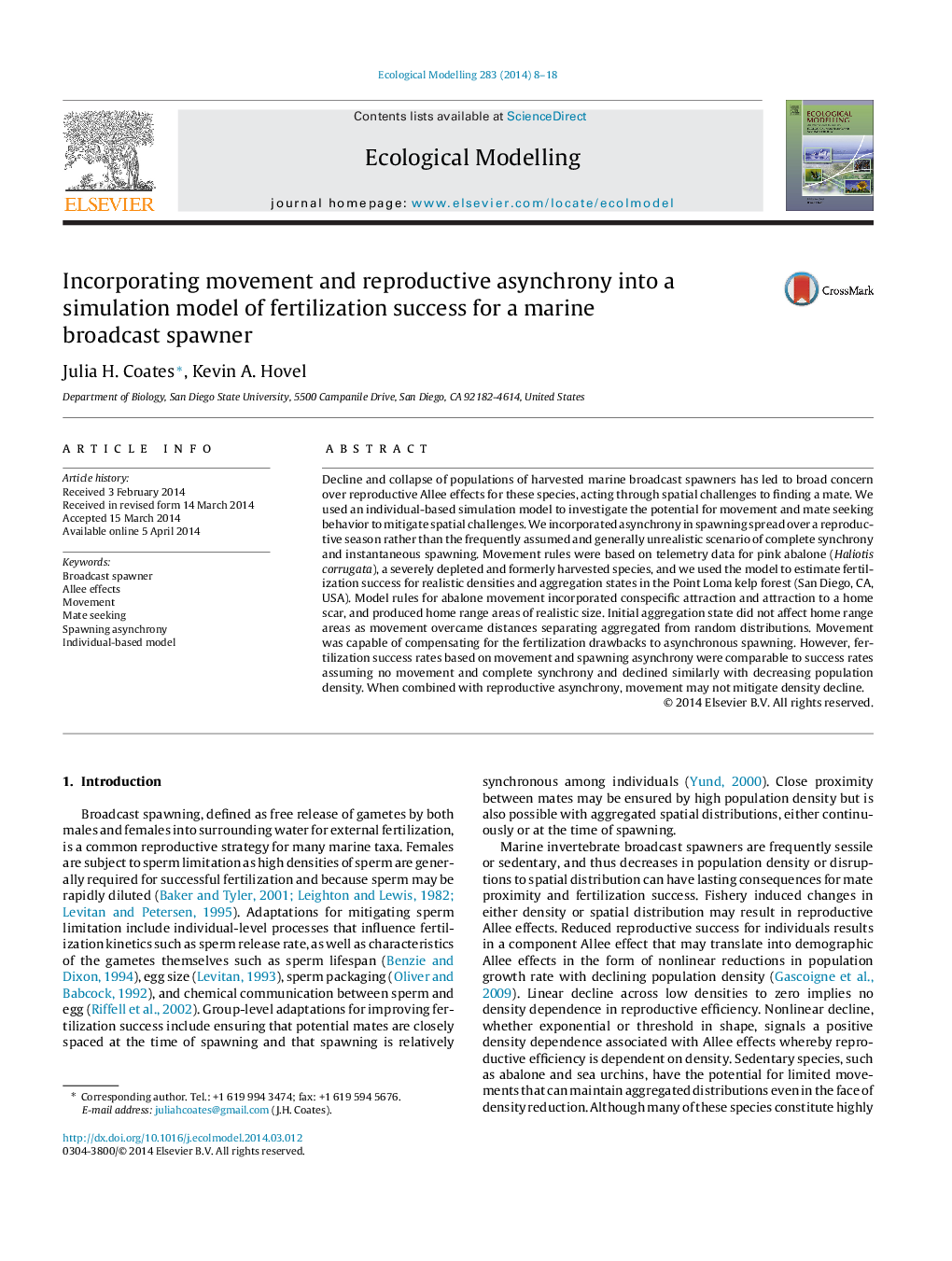| کد مقاله | کد نشریه | سال انتشار | مقاله انگلیسی | نسخه تمام متن |
|---|---|---|---|---|
| 4375928 | 1617463 | 2014 | 11 صفحه PDF | دانلود رایگان |
عنوان انگلیسی مقاله ISI
Incorporating movement and reproductive asynchrony into a simulation model of fertilization success for a marine broadcast spawner
ترجمه فارسی عنوان
جابجایی جنبشی و یکپارچگی تولید مثل در یک مدل شبیه سازی موفقیت لقاح برای سازنده پخش تصویری دریایی
دانلود مقاله + سفارش ترجمه
دانلود مقاله ISI انگلیسی
رایگان برای ایرانیان
کلمات کلیدی
سازنده پخش، اثرات آللی، جنبش، همجنسگرایان، ناهید آسیمکرون، مدل مبتنی بر فرد
موضوعات مرتبط
علوم زیستی و بیوفناوری
علوم کشاورزی و بیولوژیک
بوم شناسی، تکامل، رفتار و سامانه شناسی
چکیده انگلیسی
Decline and collapse of populations of harvested marine broadcast spawners has led to broad concern over reproductive Allee effects for these species, acting through spatial challenges to finding a mate. We used an individual-based simulation model to investigate the potential for movement and mate seeking behavior to mitigate spatial challenges. We incorporated asynchrony in spawning spread over a reproductive season rather than the frequently assumed and generally unrealistic scenario of complete synchrony and instantaneous spawning. Movement rules were based on telemetry data for pink abalone (Haliotis corrugata), a severely depleted and formerly harvested species, and we used the model to estimate fertilization success for realistic densities and aggregation states in the Point Loma kelp forest (San Diego, CA, USA). Model rules for abalone movement incorporated conspecific attraction and attraction to a home scar, and produced home range areas of realistic size. Initial aggregation state did not affect home range areas as movement overcame distances separating aggregated from random distributions. Movement was capable of compensating for the fertilization drawbacks to asynchronous spawning. However, fertilization success rates based on movement and spawning asynchrony were comparable to success rates assuming no movement and complete synchrony and declined similarly with decreasing population density. When combined with reproductive asynchrony, movement may not mitigate density decline.
ناشر
Database: Elsevier - ScienceDirect (ساینس دایرکت)
Journal: Ecological Modelling - Volume 283, 10 July 2014, Pages 8-18
Journal: Ecological Modelling - Volume 283, 10 July 2014, Pages 8-18
نویسندگان
Julia H. Coates, Kevin A. Hovel,
